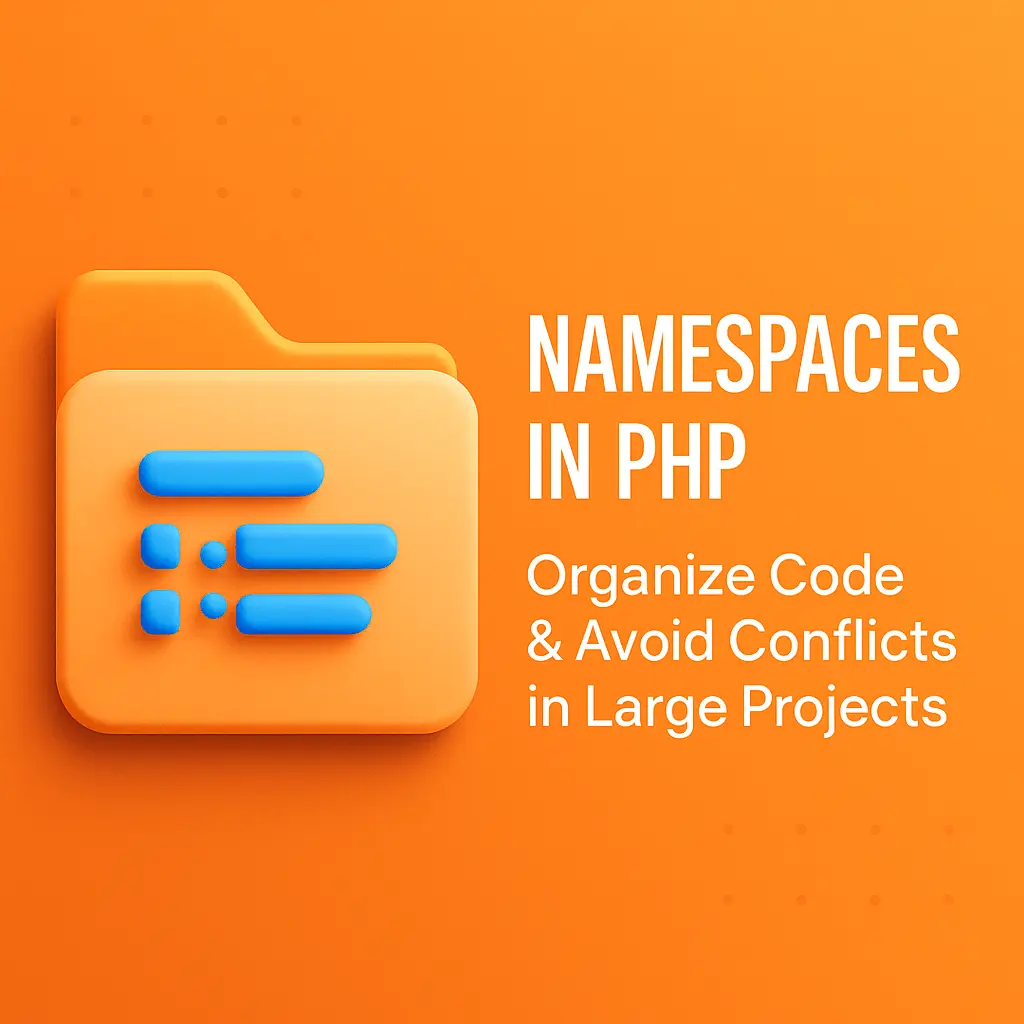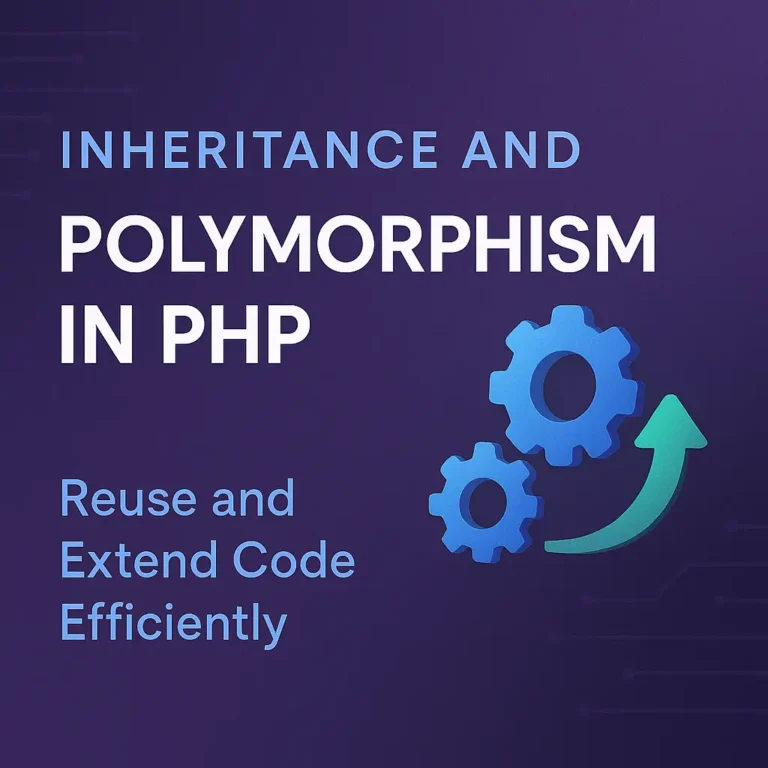In this article, we will explore how to declare namespaces, use them, and create namespace aliases in PHP, along with practical examples to illustrate their usage.
Declaring Namespaces
What is a Namespace?
A namespace in PHP is a way to encapsulate items such as classes, interfaces, functions, and constants. This encapsulation prevents naming conflicts by providing a context in which these items exist. Namespaces are particularly useful in large projects or when integrating third-party libraries.
How to Declare a Namespace
To declare a namespace, use the namespace keyword followed by the namespace name at the beginning of the PHP file, before any other code.
Example: Declaring a Namespace
<?php
namespace App\Models;
class User {
public function __construct() {
echo "User model initialized.\n";
}
}
?>
In this example, the User class is declared within the App\Models namespace. This means that the full name of the class is App\Models\User.
Namespace Naming Conventions
Namespace names typically follow the same conventions as class names, using PascalCase or camelCase. They can be nested to represent a hierarchical structure.
<?php
namespace App\Controllers;
class UserController {
public function __construct() {
echo "UserController initialized.\n";
}
}
?>
In this example, the UserController class is part of the App\Controllers namespace, suggesting a clear organizational structure within the application.
Using Namespaces
Fully Qualified Names
To use a class or other element from a namespace, you need to specify its fully qualified name, which includes the namespace and the class name.
Example: Using a Fully Qualified Name
<?php
require 'User.php'; // Assuming User.php declares the App\Models\User class
$user = new \App\Models\User();
?>
In this example, the fully qualified name \App\Models\User is used to create a new instance of the User class.
Importing Namespaces with use
To simplify the usage of classes from namespaces, PHP provides the use keyword. This keyword allows you to import a namespace or a specific class, reducing the need to use fully qualified names throughout your code.
Example: Importing a Namespace
<?php
namespace App\Controllers;
use App\Models\User;
class UserController {
public function __construct() {
echo "UserController initialized.\n";
}
public function createUser() {
$user = new User();
echo "User created.\n";
}
}
// Assuming User.php is already required and declares App\Models\User
$controller = new UserController();
$controller->createUser();
?>
In this example, the use keyword imports the App\Models\User class, allowing it to be referenced simply as User within the UserController class.
Importing Multiple Classes
You can import multiple classes from the same namespace by listing them after the use keyword, separated by commas.
<?php
namespace App\Controllers;
use App\Models\User;
use App\Models\Product;
class UserController {
public function __construct() {
echo "UserController initialized.\n";
}
public function createUser() {
$user = new User();
echo "User created.\n";
}
public function createProduct() {
$product = new Product();
echo "Product created.\n";
}
}
// Assuming User.php and Product.php are already required and declare App\Models\User and App\Models\Product
$controller = new UserController();
$controller->createUser();
$controller->createProduct();
?>
In this example, both the User and Product classes are imported from the App\Models namespace.
Namespace Aliasing
What is Namespace Aliasing?
Namespace aliasing allows you to create a short alias for a namespace or a specific class within a namespace. This can make the code more readable and concise, especially when dealing with long or complex namespace names.
How to Alias a Namespace
To create an alias, use the as keyword with the use statement.
Example: Aliasing a Namespace
<?php
namespace App\Controllers;
use App\Models\User as UserModel;
class UserController {
public function __construct() {
echo "UserController initialized.\n";
}
public function createUser() {
$user = new UserModel();
echo "User created.\n";
}
}
// Assuming User.php is already required and declares App\Models\User
$controller = new UserController();
$controller->createUser();
?>
In this example, the App\Models\User class is aliased as UserModel, making it easier to reference within the UserController class.
Aliasing Functions and Constants
PHP 5.6 introduced the ability to alias functions and constants using namespaces. This is useful for importing specific elements without importing the entire namespace.
Example: Aliasing a Function
<?php
namespace MyFunctions {
function sayHello() {
echo "Hello from MyFunctions namespace!\n";
}
}
namespace {
use function MyFunctions\sayHello as greet;
greet(); // Output: Hello from MyFunctions namespace!
}
?>
In this example, the sayHello function from the MyFunctions namespace is aliased as greet, making it more intuitive to use in the global namespace.
Practical Use Cases
Organizing a Large Application
Namespaces help to organize large applications by grouping related classes together. This makes it easier to manage the codebase and avoid naming conflicts.
// src/Models/User.php
<?php
namespace App\Models;
class User {
// User model implementation
}
// src/Controllers/UserController.php
<?php
namespace App\Controllers;
use App\Models\User;
class UserController {
// UserController implementation
}
Integrating Third-Party Libraries
When integrating third-party libraries, namespaces prevent naming conflicts with your own classes.
// src/Services/PaymentService.php
<?php
namespace App\Services;
use ExternalLibrary\PaymentGateway as Gateway;
class PaymentService {
private $gateway;
public function __construct() {
$this->gateway = new Gateway();
}
public function processPayment($amount) {
$this->gateway->charge($amount);
}
}
In this example, the PaymentGateway class from ExternalLibrary is aliased as Gateway to avoid naming conflicts and improve code readability.
Conclusion
Namespaces are a vital feature in PHP that enhance code organization and maintainability. By declaring namespaces, using them effectively, and leveraging namespace aliasing, developers can manage large codebases more efficiently and avoid naming conflicts. Whether you are building a small project or a complex application, understanding and utilizing namespaces will significantly improve the structure and clarity of your code.






